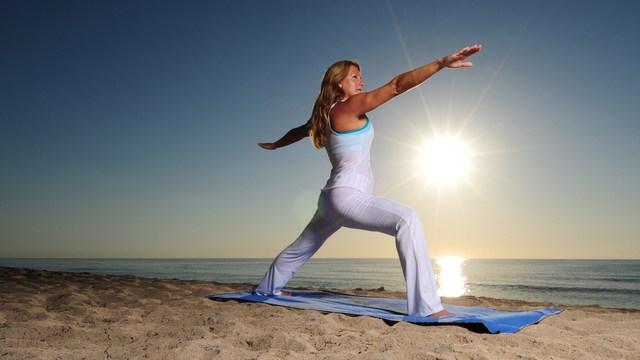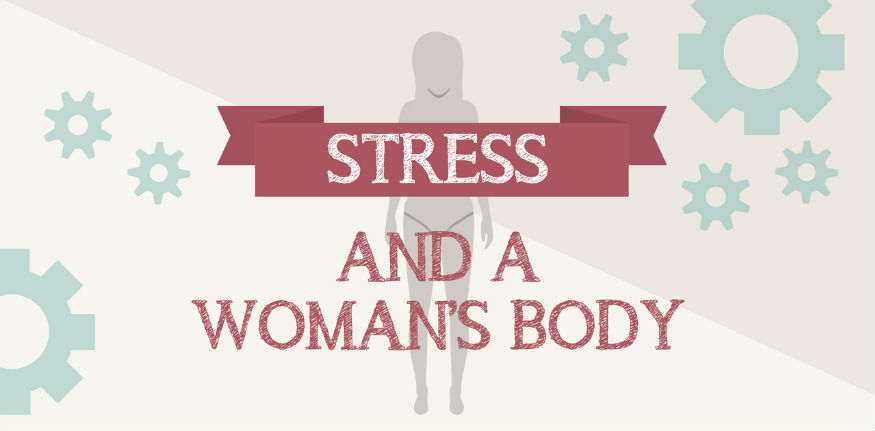 Beth Swanson/PhotoSpin
Beth Swanson/PhotoSpin
Since I just took up yoga, I was delighted to see that September is National Yoga Month. It's time to celebrate and acknowledge all that yoga offers us, from the physical benefits, to the emotional stability, as well as good breathing techniques.
After I took my first class (one that was slightly too advanced for me) I looked into the kinds of classes that yoga offers and how each one can help. I enjoyed talking to several instructors about yoga and what may suit me. Because there are so many variations, and studios often fuse names with their own take on things, I’ll talk about the main forms.
Bikram yoga is one of the best known forms. The founder is Bikram Choudhury, who named the practice after himself. Bikram is considered one of the toughest form of yogas, based on 26 positions that help the every facet of the body.
What is also tough is that it’s “hot yoga,” done in a room with a temperature of of about 100 degrees F.
You’ll most certainly sweat profusely, and you'll need to make sure you’re well-hydrated before, during and after the class. Don’t borrow a yoga mat (you’ll sweat on it) and bring a small towel.
This yoga isn’t for the faint-hearted and anyone with medical conditions should check with their doctors first. Pregnant women should never attempt Bikram yoga. It can raise the body’s core temperature too much and it not safe for mom or baby.
This form of yoga strengthens and elongates the body and is great for people already used to yoga and in good shape. Definitely not for newbies to yoga. It’s great for participants who like a fast, assertive workout in yoga.
Vinyasa yoga (my preference) is also a challenging yoga form. While I am now feeling great after four sessions because I am reasonably fit already, I felt it (strongly!) for three days after my first session.
Also known as power yoga, Vinyasa is a yoga practice based on poses that flow at a moderate to sometimes quick pace, and where breathing techniques are very important to enhance the flow.
Yoga poses are called asanas in the yoga world, but it’s fine to just call them poses.
Vinyasa is a strength-training yoga, and you’ll likely break a sweat. Poses vary from instructor to instructor so you’ll have great variety and work on every muscle you have!
This method is great for people who like activity with yoga and who don't like holding poses for long periods of time. It's also great for those who want to work on training and regulating their breathing techniques.
Ashtanga yoga is similar to Vinyasa in terms of levels of difficulty, but with Ashtanga there is not quite as much emphasis on breathing and synchronicity, as there is on a half dozen poses that are very challenging and move along quickly.
Ashtanga is great for people who need to relax but who also want some cardio movement and who like to relax by moving and challenging their bodies. This form is great for weight loss and getting that lean “yoga body” that so many would like to have.
Bring your own yoga mat, towel and water. You’ll sweat and enjoy every minute of it! Ashtanga is great for those looking to move and learn relaxation techniques at the same time.
Anusara yoga is a far less intensive style that allows personal freedom in the various poses assigned by the instructor. It’s a gentle form of yoga. You can sometimes work with a partner, each posing with the other.
It’s for the “groovy person” in you and it's great if you don’t mind chanting, holding hands and pretending you’re living on a '60s commune. This yoga is not for the self-conscious or those who tend to find hippie culture a bit too much. But if you are new, are not very supple yet and love the spiritual side, this is for you.
Yin yoga is also a form of gentle yoga that, unlike Bikram, Ashtanga and other Vinyasa forms, holds poses for up to five minutes. These poses are not too difficult and can be quite relaxing. Yin Yoga is great for beginners, those who want to relax and meditate during yoga and those who don’t enjoy flowing, rapid poses that may form sequences.
This type of yoga would probably not suit a person who wants to sweat it out and feel like they’ve had a tough workout. This yoga is for patient people who enjoy meditative exercise, or those who have simply had a long day.
If you find that yoga is for you, buy a yoga mat. It's well worth it. I bought mine (a good, brand name) from Marshalls/TJ Maxx for ten dollars. Borrowed mats stink and now that I know how much yoga makes me sweat, I'm horrified at having borrowed them!
There are many other forms, and subsets of forms, too. What is so great about yoga is that many forms vary from one class to another and from instructor to instructor. Moving from one style/class to another is fine and encouraged, until you find what works for you.
Yoga is for everyone, at every level and at any age. Yoga can be very calming for children, centering for overwhelmed adults and great for elders who want to keep their muscles supple.
What I like most is that yoga is about the person, not the class. Poses do not have to be done if the person cannot do them, is too tired, or isn't feeling very limber that day.
The “child’s pose” or resting pose is highly encouraged. When a person needs to rest, they simply adopt the post and the class goes on. People rest on their own at various times throughout classes.
There are certain postures taught, but 100 percent proper placement is not required. You stretch as far as you can and are never expected to “keep up” with experienced yoga participants. Instructors never make you feel like yoga is some kind of competition.
Yoga helps the body. Yoga is calming. Yoga helps with stress, anxiety, depression and other types of mental health issues. Yoga classes are places of peace, non-judgement and reflection, and enhance the mind and soul just as much as the body.
The only "bad" thing about yoga is that it may be addictive. Consider yourself warned ...
Sources:
Women’s Health Magazine. Yoga. Types of Yoga. Web. Retrieved September 16th, 2014.
http://www.womenshealthmag.com/yoga/types-of-yoga
YogaJournal.com. Types of Yoga. Yoga 101. Yoga for Beginners. “Find Your Match Among the Many Types of Yoga”. Web. Retrieved September 16th, 2014.
http://www.yogajournal.com/article/beginners/not-all-yoga-is-created-equal
Reviewed September 19, 2014
by Michele Blacksberg RN
Edited by Jody Smith





Add a Comment2 Comments
Are you kidding me? I practiced Bikram yoga at least 3 times a week when I was pregnant. My doctor completely supported me. I had a great pregnancy, an easy birth and a perfect and health baby boy.
October 12, 2014 - 10:26amPlease don't make sweeping generalizations.
This Comment
I enjoyed your article very much as I have only done a few yoga moves incorporated into other classes I've taken. I have always been curious about yoga classes in general, but haven't had the time to really research the types. Thank you for placing the info into one article. I have more of an idea what types of classes are offered and what to expect!
September 19, 2014 - 3:02pmThis Comment